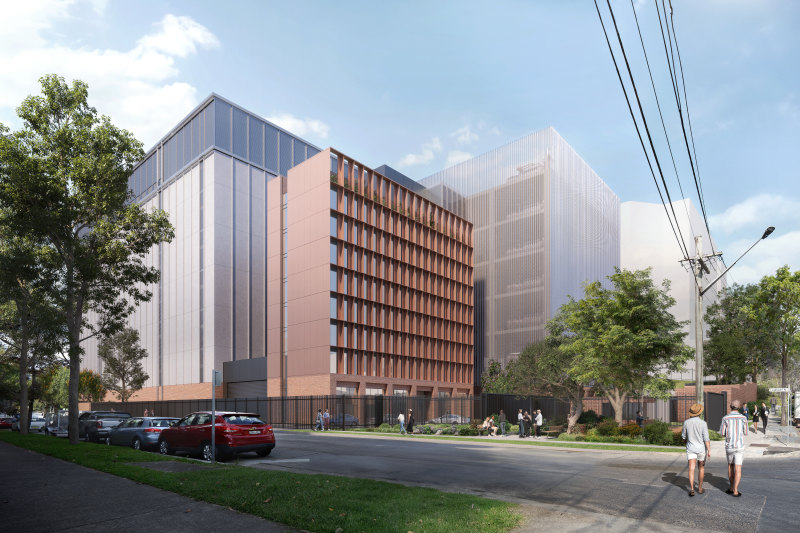Australian building activity could see the sharpest decline since GFC, BIS Oxford Economics finds

Over the next two years Australian building activity could see the sharpest decline since the Global Financial Crisis, a new report suggests.
Building market analyst and forecaster BIS Oxford Economics has predicted a 23 per cent fall in residential building starts in the next two years, which will see dwelling commencements drop to about 170,000 by the end of the 2019/20 financial year.
At its peak in 2017/2018 the country saw 220,000 dwellings being built.
Falling investor demand has been the key driver of the downturn but high land costs, slowing migration and a slump in house prices have also played into it, according to the analyst’s Building Australia 2018-2033 report.
“The residential side is correcting itself over the next two years mainly because investors are pulling out of the market,” said Adrian Hart, associate director of BIS Oxford Economics.
The investor-driven apartment sector is set to face the biggest decline. BIS Oxford Economics forecasts a 50 per cent drop in high-density residential dwellings in the next two years from the peak of 70,000 dwellings in 2015/16.
“We’ve gone through this huge cycle of high density residential. It’s been a massive boom and bust like the resources boom,” said Mr Hart
“In the next two years that’s going to fall to about 30,000 because there’s no longer the appetite. That’s partly because of new capital controls and higher fees and charges in that part of the [investor] market.
“But we’re also starting to see prices level out so from the investment perspective the capital growth is not the same as two years ago.”
Victoria and NSW will bear the brunt of that decline as the states saw the strongest apartment boom in recent years.
In Queensland, high-density building starts reached its peak at 15,000 dwellings in 2015/16, which fell to about 7500 in 2017/18 and BIS Oxford Economics expects it to fall further to fewer than 5000 starts by 2020.
“The point of Queensland is they’ve already gone through a lot of that correction,” Mr Hart said.
Victoria, however, has some way to go before dwelling starts decline and begins to correct itself, according to Mr Hart.
Victoria has dwelling starts of 18,000 to 19,000 per annum and “that’s unsustainable definitely in the short term”, he said.
“If I were to look in a decade from now we might be climbing back to those levels. But we don’t need to be building that much high-density stock right now.”
But Mr Hart said while the country could be facing the biggest correction in a decade, national dwelling starts will still be higher than during the GFC.
“We’re not going back to that nasty time of 130,000 dwellings. That’s massively under-supplying the market,” Mr Hart said.
He said ramping up residential construction has worked to ease affordability.
“The answer to high prices is to bring in supply and that’s what we’re doing in bucket loads and that’s why we’re seeing a drop in prices.” But he warned that it wasn’t the silver bullet. “We need a mixture of high-rise and medium-density as well as housing on the [cities’] fringes that can support homeowners and first-home buyers.
“The impact on the economy is the most concerning. For every dollar we spend on building and construction, two to four dollars goes elsewhere in the economy,” said Mr Hart.
Meanwhile the report has forecast the value of non-residential commencements will remain at record high levels and will rise a further 5 per cent over the next two years, moderating the steep fall in residential construction.
Mr Hart said public infrastructure, non-residential construction, engineering activity and mining projects would be needed to buoy the economy to avoid boom-bust cycles.
AMP Capital’s chief economist Shane Oliver warned that if dwelling construction fell too rapidly, the supply may end up falling behind again
“We spent the last two years bringing up supply to the level of demand to make housing affordable and that process is still continuing and has helped. But if developers get spooked or if there’s too big a correction that may lead to problems down the track,” said Dr Oliver.
“In other words, we get an improvement for the next year or so but the affordability problems return next decade as construction activity falls back.”
Grattan Institute research fellow Brendan Coates said housing construction will always be subject to economic cycles but a fall in supply would threaten any gains made on housing affordability.
“The way you make construction stronger over the [economic] cycle is making it easier to build houses,” said Mr Coates.
“The worst thing that could happen is we make it harder to build apartments. We’ve finally met demand. The point is high prices need to fall and more supply is precisely what’s doing that.
“The challenge is we build enough homes over the cycle to meet population growth. The long-term policy challenge is maintaining high levels of construction.”
We recommend
We thought you might like
States
Capital Cities
Capital Cities - Rentals
Popular Areas
Allhomes
More







